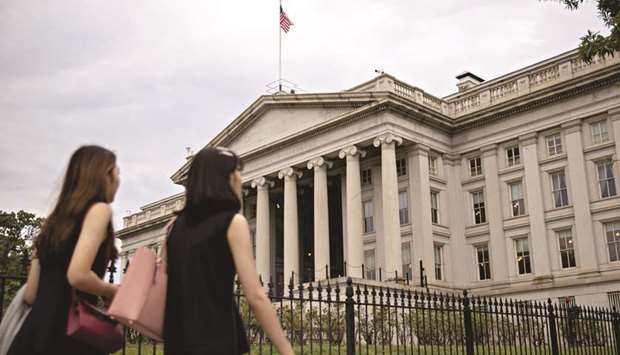The global currents at play in markets show no signs of releasing emerging stocks and currencies anytime soon.
For two years, investors were unable to trade developing-nation assets on their merits as they adjusted for trade-war risks. Just as the signing of a phase-one deal between the US and China on Jan. 15 mitigated that threat, the coronavirus outbreak postponed a rebound.
If signals from external markets are to be believed, the pattern of fits and starts is set to continue.
The US currency continues to defy traders and economists. Many had expected it to weaken once the preliminary trade deal was signed, as it would reduce haven demand as well as the downward pressure on China’s yuan.
But the dollar has made the best start to a year since 2015. Fears over the impact of the virus on global growth have kept the haven trade going.
That’s put the dollar in an upward channel, a technical pattern that captures long-term trends. As long as it remains within this range, its outlook remains bullish. The potential for emerging-market currencies to weaken within their own trading range is clear.
Ever since US Treasuries became a giant vacuum cleaner for global capital, emerging-market stocks and currencies have had little chance of attracting investors.
With inflation expectations remaining low in the world’s largest economy, and with the prevailing mood of caution, the bonds may continue to deprive riskier assets of inflows. Even if the Federal Reserve raises inflation expectations by allowing the economy to run faster, it could be a double-edged sword for emerging markets. Riskier bonds have benefited from the low-yielding environment because of their superior returns. A steepening yield curve would erode that advantage and halt their rally.
The saving grace of developing nations – faster growth relative to rich countries – is also under threat. With China remaining partially shut down because of the virus, demand for commodities has weakened. The Bloomberg Commodity Index closely tracks quarterly gross-domestic-product growth in the world’s second-largest economy. China’s real GDP is projected to expand at 5.8% this year and the next, the slowest pace since 1990.
The raw-material gauge has completed a double death-cross technical pattern, with its 50-day moving average falling below both the 100-day and 200-day averages. This phenomenon has heralded big sell-offs in the past, including in 2008 and 2014.
Emerging economies depending on either China or commodity exports could face challenging times. Global investors’ reluctance to return to emerging markets in a meaningful way can be seen most clearly in the behaviour of gold.
The persistence of the virus risk, with the death toll nearing 1,400, has revived a rally in the precious metal that has taken it to the highest level in seven years.
Gold now trades at above $1,576 per troy ounce, just below a key resistance level at $1,587. If China fails to show progress in containing the virus quickly, risk-off trades could push the metal above that level, when another bout of gains may ensue, to the detriment of emerging-market assets.

Pedestrians walk near the US Treasury building in Washington, DC. Ever since US Treasuries became a giant vacuum cleaner for global capital, emerging-market stocks and currencies have had little chance of attracting investors.


